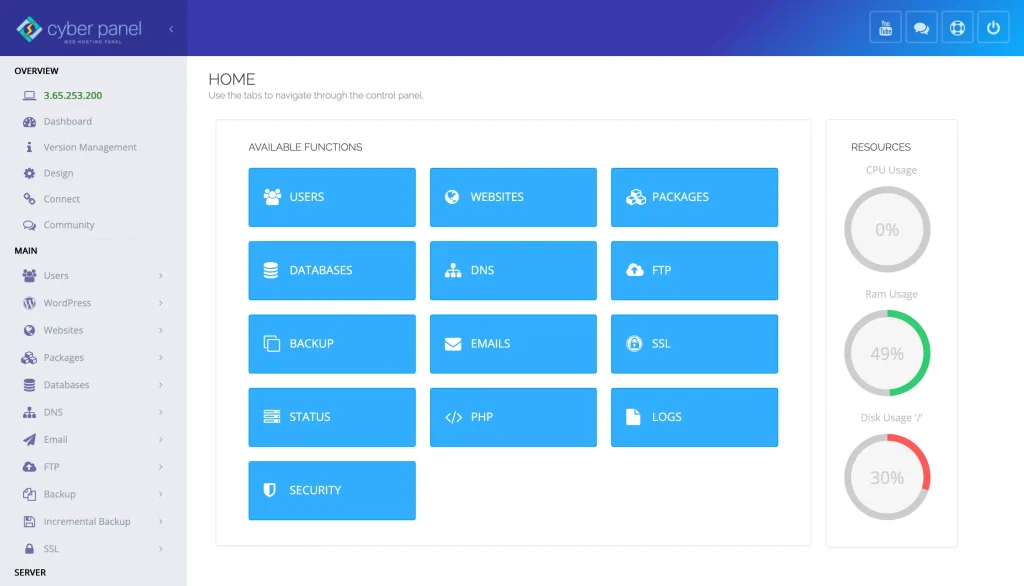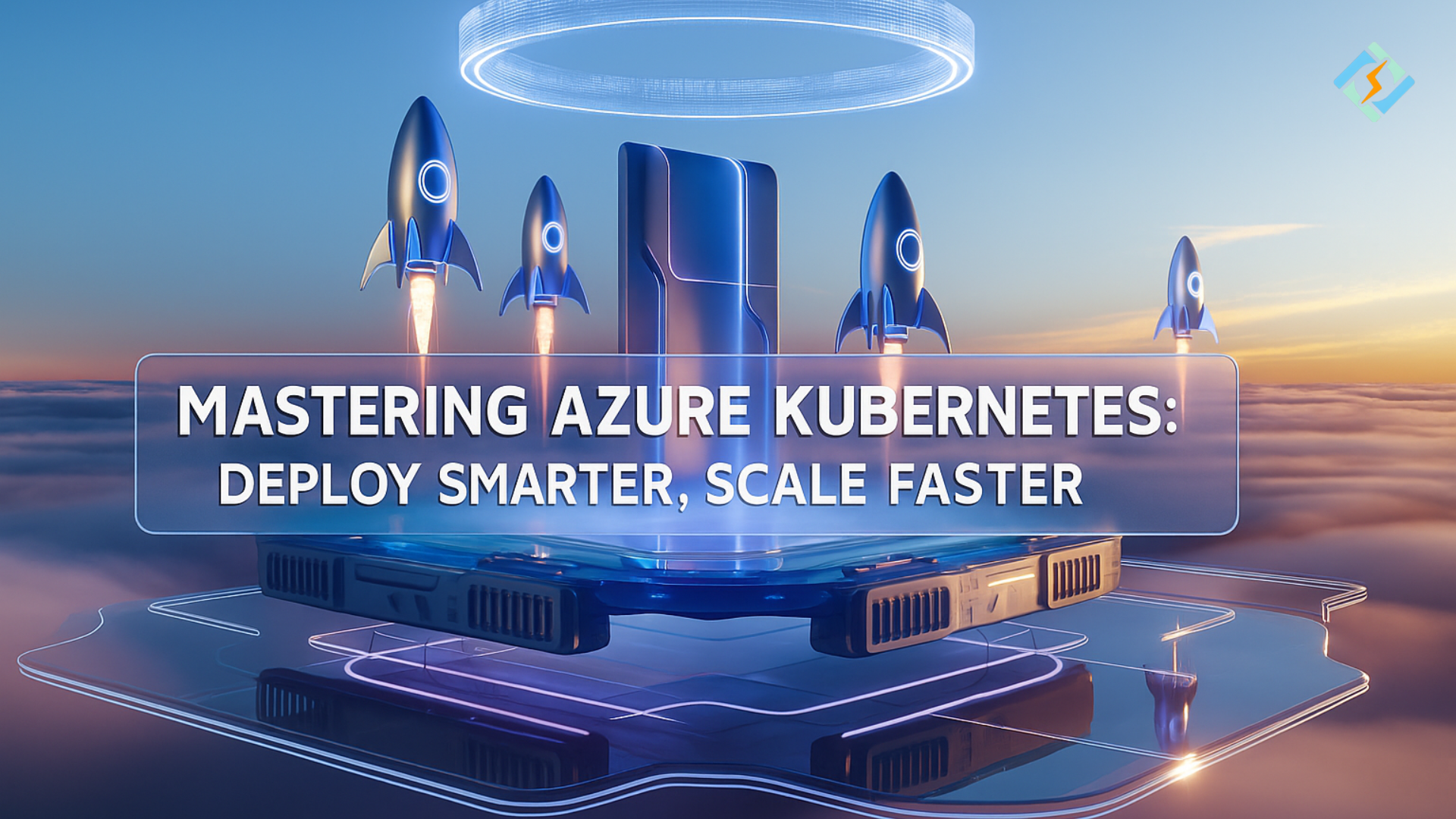With Azure Kubernetes Service (AKS), that deployment is easier, more secure, and more deeply integrated with the whole Azure ecosystem. No longer do you have to spend time setting up clusters, applying patches to nodes, and tuning the high-availability network — that is all done for you.
For those already using Kubernetes on Azure, AKS simplifies the experience. You get built-in CI/CD integrations, automatic scaling, secure networking, and monitoring tools—all part of the Azure experience. Whether you are modernizing existing applications or building new applications, AKS enables you to accelerate DevOps and optimize resource utilization by eliminating the management overhead associated with running Kubernetes.
Let’s learn Azure Kubernetes!
What is Azure Kubernetes Service?
Azure Kubernetes Service (AKS) is a fully managed Kubernetes service from Microsoft. It manages the control plane, health check, and node upgrade. Using AKS, you eliminate the burden of needing to provision and manage VMs and load balancers as you deploy and manage your containerized applications in Azure more securely than ever before.
AKS makes it easy to create a Kubernetes cluster. It already integrates with Azure AD, monitoring, and networking services. You can scale effortlessly, roll out apps with GitOps, and enforce compliance—all without managing Kubernetes infrastructure yourself.
How To Establish a Kubernetes cluster on Azure with AKS?
You can deploy AKS using a single command in Azure CLI. It provides networking, storage, and node provisioning on a single user-friendly platform. Once deployed, you’d configure kubectl to begin to manage pods like you normally would.
Get exclusive access to all things tech-savvy, and be the first to receive
the latest updates directly in your inbox.
Code Illustration:
# Create resource group
az group create --name aks-rg --location eastus
# Create AKS cluster
az aks create \
--resource-group aks-rg \
--name myAKSCluster \
--node-count 3 \
--enable-addons monitoring \
--generate-ssh-keys
# Connect to cluster
az aks get-credentials --resource-group aks-rg --name myAKSCluster
kubectl get nodes
Output:
NAME STATUS ROLES AGE VERSION
aks-nodepool1-12345678-vmss000000 Ready agent 5m v1.x.x
...
What is the Importance of Azure Kubernetes Integration?
Kubernetes Azure uses Azure’s platform functionalities such as Azure AD auth, Managed Identity, Azure Monitor, and network policies. Everything’s made easy for managing containers: it natively supports logs, security, compliance, and scaling… all naturally built-in with AKS.
Integrations are Azure Policy for guardrails, Azure Key Vault for secrets, Azure Monitor for logging, and Application Gateway for Ingress. These make AKS an ideal place for running your production workloads using containers.
Can I Use AKS for Multiple Environments?
Yes. You can create separate AKS clusters or namespaces for dev, staging, and production environments. Use Azure Blueprints or Terraform to manage resources and enforce policies at scale.
Define the environment using Terraform or ARM templates. Utilize managed identities for access control; leverage GitOps for deployment flows. Automate the build environment to make it reproducible.
How to Effectively Scale Applications on AKS?
- Node Autoscaler: Automatically increases/decreases the number of nodes according to pod requests.
- Pod Autoscaler: Horizontal Pod Autoscaler (HPA) is responsible for scaling the pods based on CPU/memory.
- Cluster Autoscaler: Scales the number of nodes when it sees pending pods.
Code Sample:
kubectl apply -f - <<EOF
apiVersion: autoscaling/v2beta2
kind: HorizontalPodAutoscaler
metadata: {name: webapp-hpa}
spec:
scaleTargetRef: {apiVersion: apps/v1, kind: Deployment, name: webapp}
minReplicas: 2
maxReplicas: 10
metrics:
- type: Resource
resource:
name: cpu
target: {type: Utilization, averageUtilization: 60}
EOF
This ensures your web app scales automatically based on load.
What are the networking capabilities in AKS?
| Feature | Description |
|---|---|
| Azure CNI | Pods receive IP from Azure VNet |
| Calico Network Policy | Pod-level traffic restrictions |
| Application Gateway | Managed Ingress with WAF and SSL offload |
| Service Mesh Support | Integrate Istio, Linkerd, or Open Service Mesh for application-level routing |
How is Storage Handled in Azure Kubernetes?
AKS supports:
- Azure Disk for block storage
- Azure Files for shared folders
- CSI integration for dynamic volume provisioning
apiVersion: v1
kind: PersistentVolumeClaim
metadata: {name: data-pvc}
spec:
accessModes: ["ReadWriteOnce"]
storageClassName: "managed-premium"
resources: {requests: {storage: "10Gi"}}
Use Azure Files for shared workloads and disk for databases.
What Common Issues Arise in Azure Kubernetes Services And How to Fix Them?
| Problem | Cause | Solution |
|---|---|---|
FailedMount PVC errors | Enable managed identity and access via the CSI plugin | Check Azure portal and consider a multi-region setup |
| Control plane unreachable | AKS cluster region outage | Check Azure portal and consider multi-region setup |
Slow kubectl response times | Dashboard not enabled or no agent installed | Install Azure Monitor agent for faster API response |
Role of CyberPanel in AKS Workloads

The role of CyberPanel changes in an AKS setting:

- Templates Container Images: Add support to create a Docker image with GitHub Actions or Azure DevOps.
- DNS & SSL: Use CyberPanel-managed domains to configure Ingress with TLS certificates.
- Webhook Automation: Trigger deployments on new revisions built with GitOps CI/ CD pipelines.
Although it’s not responsible for AKS management directly, CyberPanel, i.e., web hosting control panel, simplifies the delivery of apps by taking care of hosting, domains, SSL, and DNS — the in-between work of working between traditional hosting requirements and deploying in the cloud.
Frequently Asked Questions
Can I utilize Kubernetes in Azure specifically for GPU workloads?
Yes. Leverage GPU-enabled VM node pools in AKS for ML, AI, or rendering workloads
Is AKS free?
There is no cost for the control plane. You only have to pay for VMs, storage, and networking.
How do I secure AKS clusters?
Leverage Azure Policy, Pod identity, Network policies, and Private clusters.
Can I use Helm charts on AKS?
Yes. Package and run applications on any Kubernetes cluster using Helm.
How can I upgrade the AKS releases?
Use az aks upgrade to change the versions of the control plane and nodes with minimal downtime.
Wrapping Up!
Azure Kubernetes Service (AKS) provides the same great features of Kubernetes, but with the added benefit of integrating with Microsoft Azure. You receive automatic updates, scaling, built-in security, and full ecosystem support — and no nodes to manage!
No matter if you’re a startup or an enterprise, running on Kubernetes Azure provides performance and security for your container strategies. Toss in CyberPanel for hosting-friendly automation and domain management.
Ready to launch containers in the cloud? Deploy Azure Kubernetes today and accelerate your digital transformation!



